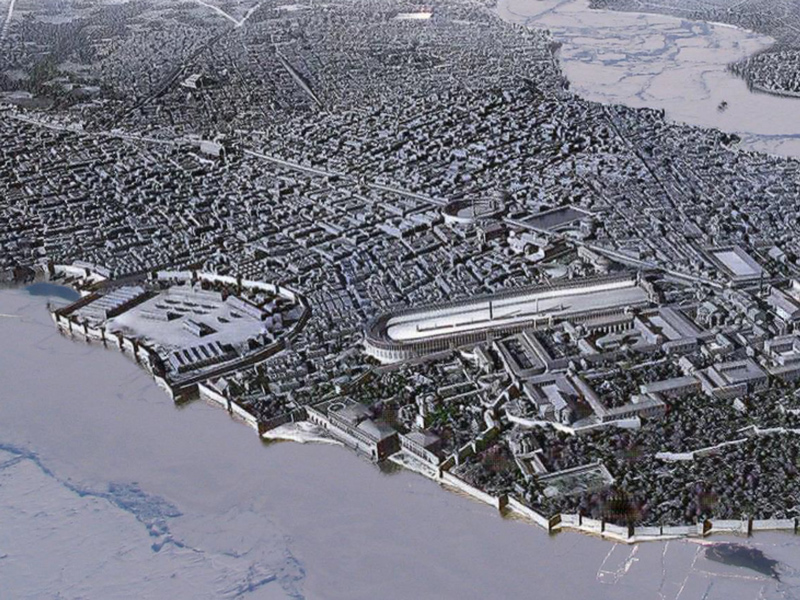It was one of the coldest winters the region had ever experienced: In 763, large parts of the Black Sea froze over and icebergs were sighted on Bosporus. Contemporary historians reported this unusual weather phenomenon in the winter of 763/764 in their records from Constantinople, now Istanbul. An international, interdisciplinary study involving the Austrian Academy of Sciences (OeAW) shows that this extremely cold period in the early Middle Ages was triggered by volcanic eruptions in Iceland.
Previous estimates of the influence of volcanic eruptions on the global climate between 700 and 1000 AD were based on the assumption of a volcanic dormant phase. However, this assumption contradicts geological evidence from Iceland and sulphate concentrations in ice cores from Greenland, which the researchers have now published in the journal Communications Earth and Environment, part of the prestigious Nature portfolio.
Sulphur clouds drift across Europe
The new study uses analyses of so-called cryptotephra (traces of volcanic ash invisible to the naked eye), high-resolution sulphur isotope analyses and other chemical indicators of volcanic eruptions from numerous ice cores from Greenland to determine volcanic activity and the concentration of climate-relevant sulphur aerosols in the period between 700 and 1000 AD.
The result: a longer episode of volcanic sulphur dioxide emissions between 751 and 940 AD was dominated by eruptions in Iceland. "Until now, volcanic eruptions have been interpreted as a short-lived, random climate forcing, effective for a maximum of 1 to 3 years," explain Imogen Gabriel and Michael Sigl, lead authors of the study from the University of Bern.
The early medieval series of eruptions is referred to in the study as the "Icelandic Active Period". It began with eruptions of the Katla volcano between 751 and 763, some of which reached into the stratosphere and coincided with strong temperature anomalies across Europe. These cold periods can be reconstructed using isotope data from stalactite caves (such as Spannagel Cave in the Austrian Zillertal Alps) and historical sources from Ireland to the Mediterranean.
God's punishment
Byzantine researcher Johannes Preiser-Kapeller from the Institute of Medieval Studies at the Austrian Academy of Sciences, who was involved in the study, describes how these historical climate changes affected early medieval society: "Historical sources describe not only that it was very cold, but also that the extreme temperatures caused animals to die and crops to freeze. Not only did people suffer directly, but they were also deeply shaken on many levels," says the OeAW researcher.
When a meteor shower - an impressive astronomical phenomenon that lights up the sky - occurred in March 764, many people thought that the end of the world had come. This time of crisis also had an impact on the political climate. For the Byzantine Empire that Preiser-Kapeller is researching, it was a time of internal conflict that went down in history as the "image controversy". Preiser-Kapeller: "People argued about how to worship the divine properly. From the point of view of image worshippers, the emperor was to blame because he forbade the proper veneration of the saints. The crisis was therefore politically exploited and interpreted as ’God's punishment’”.
Volcanoes under-represented in climate models
The study's interdisciplinary approach also highlights the significant contribution of persistent volcanic sulphate emissions to pre-industrial atmospheric aerosol pollution, which has not been sufficiently taken into account in previous climate reconstruction estimates. And it highlights the need for further interdisciplinary research to better understand the climate feedbacks associated with these phenomena in the past and present.
